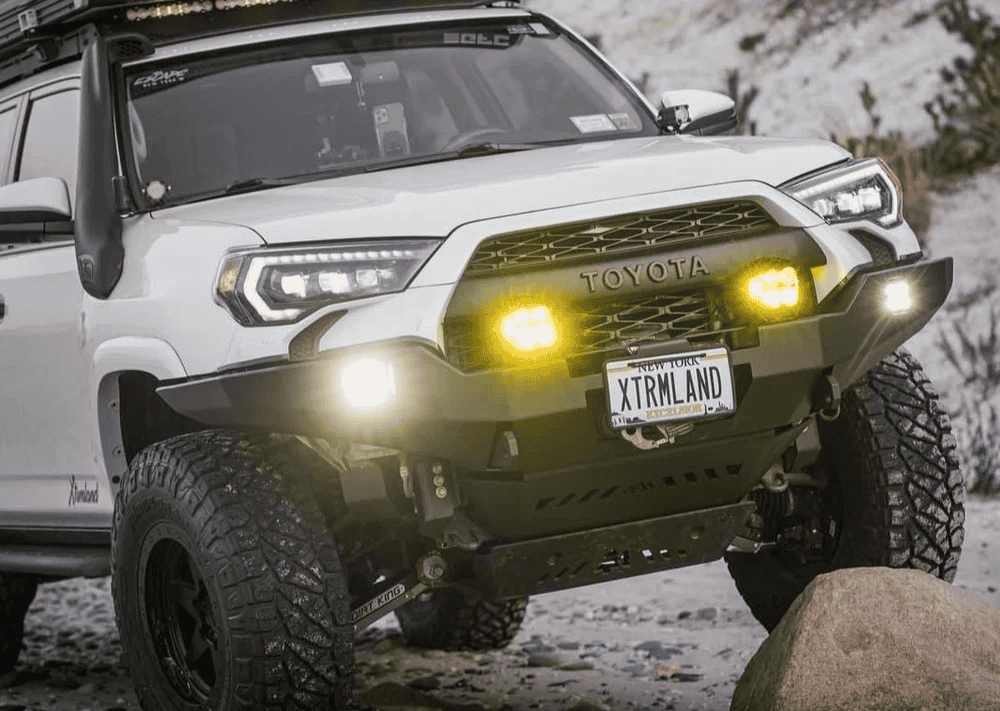Overland Vehicles

An aerodynamic roof setup manages the air as it meets, moves over, and leaves the vehicle. Drag grows quickly with speed, so highway cruising is where clean flow matters most. The goal is to reduce pressure drag from abrupt shapes and minimize separation where the airflow peels away and becomes turbulent. Smooth transitions from windshield to roof, gentle curves at the front edge, and tidy edges at the rear help preserve attached flow and cut wake turbulence. On tall vans, the frontal area is fixed, but smart shaping and tidy accessories still trim drag. Even modest improvements can translate to noticeable fuel savings or added EV range over long trips.
Form drag dominates on slab sided vehicles. A bluff front and sharp roof edges encourage early flow separation and a large wake. Rounding leading edges, lowering the profile of roof gear, and tapering rearward shapes reduce that wake. Skin friction matters less than pressure drag at these scales, but smooth surfaces still help. Crosswind yaw angles also matter, so designs should work with air arriving from off center, not only straight on.
Turbulence translates to hiss and buffeting in the cabin. Low profile mounts and rounded accessory fronts calm the air before it reaches the roof. Reducing vortex shedding around bars and brackets improves conversation clarity and reduces fatigue on long drives. Quiet airflow is a side benefit of a good aerodynamic roof setup, and it often signals lower drag.
Racks, solar, light housings, and cargo boxes are practical, but each can add drag if placed carelessly. The solution is not to remove utility, but to integrate it. Keep the overall profile low relative to the roof crown. Use rounded leading faces on boxes and fairing panels where appropriate. Maintain small, consistent gaps between gear and roof to avoid hot spots where air spills and tumbles. When possible, align long edges with the direction of travel to reduce cross flow separation.
Rounded aluminum extrusions, molded fairings, and low height brackets are common ways to soften the air’s first contact. Mounting hardware should not stick above the primary roof profile. Fasteners and crossbars that sit within a shallow channel or behind a rounded nose reduce local turbulence. Sealing around penetrations prevents whistling and keeps water flow predictable.
Real travel includes rain, dirt, and crosswinds. A refined aerodynamic roof setup manages water so it does not pool behind gear or dump onto the windshield. Tapered leading edges shed grime more easily. Loads should be centered and kept as low as possible to control roll and lift at speed. Height and width limits vary by region, so plan within legal envelopes.
The most practical way to verify improvements is with controlled A to B testing. Run repeatable highway loops at constant speed and record consumption. For combustion engines, fill to first click, log miles, and average several runs. For EVs, track watt hours per mile at steady speeds on calm days. Coastdown tests on quiet roads can reveal changes in total drag, while in app OBD or telematics provide trend data. Expect the biggest impact from cleaning up the first contact with air and the last few feet where the wake forms.
Aerodynamic penalties grow with speed, so design for your true cruising pace. Crosswinds and passing trucks change the effective wind angle, so favor solutions that behave consistently at yaw. In mountainous routes where speeds vary, a stable roof package that reduces lift and buffeting can be just as valuable as pure drag reduction.
An aerodynamic roof setup is as much about balance as it is about absolute numbers. You want gear that works, range that holds steady across seasons, and a calm driving experience mile after mile. That is why careful integration is worth the effort on any serious travel platform.
If you want expert help shaping airflow without sacrificing function, OZK can design and build roof systems that fit your travel style, from quiet highway cruisers to backcountry rigs. Explore our full spectrum of capable builds on overland rigs, then see how we tailor racks, solar, lighting, and storage in our custom overland upfit approach. Curious about our craftsmanship and handoff experience in Northwest Arkansas? Learn more at why choose OZK Customs.
We are a custom shop in Fayetteville, Arkansas that listens first and builds second. Bring your route, your cargo, and your priorities. We will engineer a roof plan that manages air, preserves range, and keeps the cabin quiet, then deliver it with a thoughtful sendoff so you hit the road fully dialed.
Ready to turn airflow into real world gains on your build? Tell us how you travel and we will engineer a roof package that balances utility, range, and quiet comfort. Submit the form to start your custom plan.
ADDRESS:
6159 E Huntsville Rd, Fayetteville, AR 72701
PHONE:
(479) 326-9200
EMAIL:
info@ozkvans.com